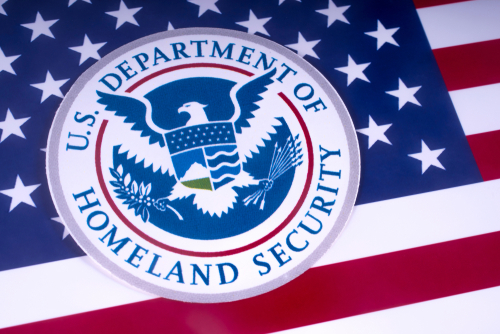The U.S. Department of Homeland Security (DHS) released the 2024 Homeland Threat Assessment (HTA), which continues to identify a high risk of foreign and domestic terrorism in 2024. The HTA provides the public and the department’s partners with a detailed report on the most pressing threats to the United States as part of the Biden administration’s ongoing effort to assist them in preparing for, preventing, and responding to the diverse and dynamic threat environment.

Going forward, the annual HTA will serve as the primary mechanism for sharing the terrorism threat level, which has previously been done through the National Terrorism Advisory System (NTAS). The issuance of NTAS advisories will be reserved for situations where DHS needs to alert the public about a specific or imminent terrorist threat or about a change in the terrorism threat level.
“Sharing information with the public on the threats we face is a vital part of protecting our homeland from today’s evolving security challenges,” said Secretary of Homeland Security Alejandro N. Mayorkas.
2024 Threat Assessments
- Foreign and Domestic Terrorism: DHS expects the threat of violence from individuals radicalized in the United States to remain high, but largely unchanged, mainly seen through lone offenders or small group attacks that occur with little warning. While sustained counterterrorism pressure has significantly degraded the ability of foreign terrorist organizations to target U.S. interests, foreign terrorist groups like al-Qa’ida and ISIS are seeking to rebuild overseas, and they maintain worldwide networks of supporters that could seek to target the homeland.
- Economic Security: DHS expects adverse nation states to continue using predatory economic practices, espionage, and cyberattacks to try harm the U.S. economy, gain advantage for foreign companies, and steal U.S. intellectual property and trade secrets.
- Border and Immigration Security: The complex border and immigration security challenges the country has faced over the last year are likely to continue. In addition to the immigration challenges, the trend of an increased supply of fentanyl and variations in its production during the last year that have increased the lethality of these drugs is expected to continue.
- Foreign Misinformation: The spread of mis-, dis-, and malinformation aimed at undermining trust in government institutions, social cohesion, and democratic processes will remain a likely strategy for adverse nation-states. Foreign actors leverage cyber and artificial intelligence (AI) tools to bolster their malign influence campaigns by improving the translation quality of their content.
DHS Efforts
The department also provided examples of its efforts and resources to combat threats identified in the 2024 HTA. Some highlights include the following:
- The U.S. Secret Service’s National Threat Assessment Center (NTAC) provided over 280 trainings and briefings to over 28,000 participants in the past year, the most in the NTAC’s history, including to state and local law enforcement, government officials, educators, mental health professionals, faith-based leaders, and workplace security managers across the country.
- DHS provides funding for state, local, tribal, and territorial governments, nonprofits, and institutions of higher education with funds through its Targeted Violence and Terrorism Prevention (TVTP) Grant Program. On Sept. 6, 2023, DHS awarded $20 million in TVTP grants to 34 organizations.
- SchoolSafety.gov consolidates school safety-related resources from across the government. Through this website, the K-12 academic community can also connect with school safety officials and develop school safety plans.
- In 2022, DHS’s Nonprofit Security Grant Program (NSGP) awarded over $250 million in funding to support target hardening and other physical security enhancements to non-profit organizations at high risk of a terrorist attack.
- DHS’s Cybersecurity and Infrastructure Security Agency (CISA) works with government and private-sector partners—including owners and operators of critical infrastructure and public gathering places—to prepare for and respond to cyberattacks, as well as enhance security and mitigate risks posed by acts of terrorism and targeted violence by providing resources addressing Active Shooters, School Safety, Bombing Prevention, and Soft Targets-Crowded Places.
The complete 2024 HTS can be found here.
